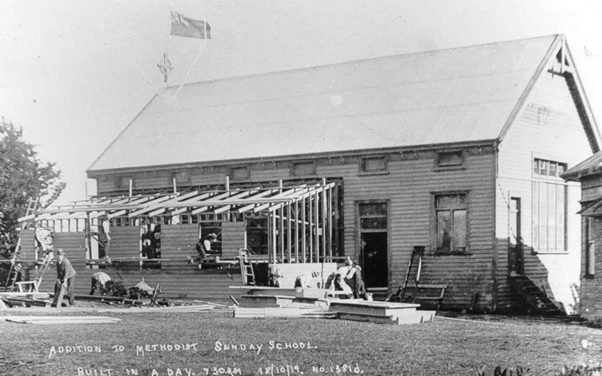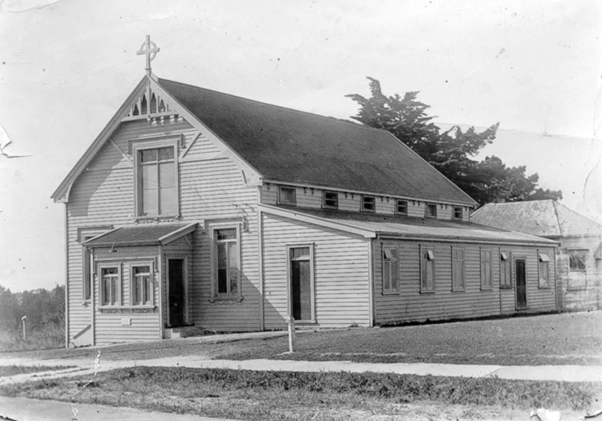Home > Walk our Views & Heritage > Hammonds Highbury Heritage Walk
Shop Categories

About UsBirkenhead Town Centre Association Inc. is a not-for-profit Incorporated Society with the objective of growing businesses in the area. We are funded by commercial ratepayers and landlords in the area.We welcome new members who are inside the targeted rate footprint and encourage them to contact us about joining. Find out more 
Business & Commercial Property Info |




This self-guided heritage walk explores the history of Highbury Village, beginning at Zion Hill Church and finishing at All Saints Church. It highlights the area's development from the late 19th century through to the Art Deco commercial boom of the 1920s and 30s. The little village remains true to its roots. Since its development in 1923 there's always been a butcher, a baker (and now a candlestick maker), fish shop, general goods store, land agent, shoe shop, drapery, and photographer around Highbury Corner. It's here that the four original roads of Birkenhead meet up. The walk finishes at All Saints Church - formerly Forester's Hall the social centre of the Village!
45min loop track
To complete the walk use the map above to find 15 plaques at heritage locations around the village. Each plaque has a brief summary of key information. To find more detailed information read below to find the relevant plaque. The QR Codes on each plaque bring you back to this page.William Francis Hammond was a key architect and surveyor in the area, migrating to Birkenhead in 1897. After his first wife died, he married Annabella Findlay Alston (daughter of the Forghams) in 1879. Hammond was wealthy, owning the Raven Hill property.
He was responsible for the name 'Highbury'. It originated from his parents' house in Highgate, London, also called Highbury. When Annabella's parents moved to the area, their house opposite Zion Hill Church was called Highbury Cottage. This name then spread, eventually being adopted by the entire area and the local shopping mall.
The site was part of land originally owned by Annabelle Hammond. After being subdivided, W.H. Payne purchased the lot in 1917. The building gained its current name when an arcade was added in 1963, possibly after a shoe shop owner named Oborn. This prominent building remains essential to the Highbury centre.
The prominent War Memorial, designed by Frank Finch and crafted in 1927 in an elegant Art Deco style, honours those lost in war. Finch designed it with grey granite, representing strength, and four polished red granite columns signifying civic virtues. The site later hosted the first dedicated Birkenhead Library, opened in 1968. Today, a new library stands behind the redeveloped civic reserve.
The building underwent enlargements and was re-dedicated in 1913. In 1923, the entire structure was moved to its current site on Hinemoa Street. It was split in two: the upper floor became the church, and the lower portion became the Parish Hall (still called the Foresters Hall). The non-religious stained glass depicts an oak leaf, referencing the original hall's link to Sherwood Forest.
Located on Birkenhead Ave and Hinemoa Street, it originally comprised eight single-level shops with a simple plastered masonry façade and defining plain parapets. This construction helped establish Highbury as a commercial centre in the 1920s. It originally housed numerous small businesses, from grocers to hardware shops. Builder Frederick Morris had a civic career, serving on the Mt Eden Borough Council before moving to Birkenhead, where he served on the Borough Council from 1930 until his death in 1934.
1. Zion Hill Church
Caption: Zion Hill Easter Camp


2. Hammond Place4. Payne's Building
Bus outside Oborn Building
5. Highbury Corner 1910
The photo shows the corner in c.1910.
6. Highbury Corner 1928
The photo shows a bus passing through the corner, c.1928.
7. Highbury Corner
8. Highbury Buildings
10. Nell Fisher Reserve
12. All Saints Church
13. Highbury Cash Store
14. Hawkins Store
15. Frederick Morris Block